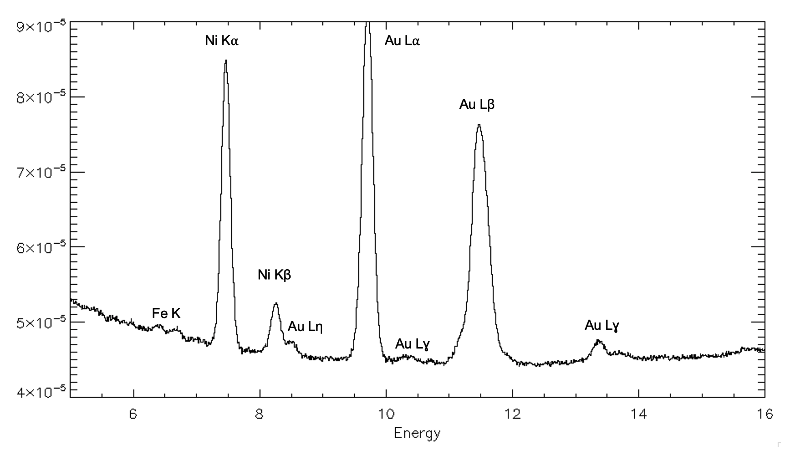NICER / ISS Science Nugget
for April 14, 2022
NICER's Cosmic Calibration
As a payload on the ISS, NICER experiences the extremes of the radiation environment, and in a roundabout way this allows NICER to improve its science calibration. The South Atlantic Anomaly (SAA) is a region of trapped energetic protons that bombard the entire ISS including NICER. These protons are energetic enough that they are able to pass right through most simple shielding materials and enter NICER's sensitive systems, where they can cause a background signal. While the SAA is normally a nuisance for NICER because of the enhanced background, it also causes a distinct pattern of gold and nickel emission lines to be registered. Here, NICER is not seeing gold or nickel from the cosmos, but rather the gold in NICER's mirrors and the nickel in its detector housing. SAA protons collide with gold and nickel atoms and knock out some of their electrons as they pass through. As the gold or nickel atom recovers after this disturbance, it emits X-rays at very well-determined energies due to their quantum properties, and these are known as characteristic K and L shell emission lines. NICER can use these precise SAA measurements to improve its energy scale calibration-that is, the relationship between the energy of an incoming X-ray photon and the electrical impulse it produces in NICER's detectors- especially at high energies. While the pre-launch energy scale requirement at 10 keV was 1%. or 100 eV, NICER is able to achieve approximately 10 eV measurement uncertainty using this technique, or about 10x better than required. This in turn enables NICER to more accurately measure the properties of X-ray emitting neutron stars and black holes. NICER continues to monitor its energy scale using this technique to detect long term calibration trends.

Figure: NICER spectrum measurements during passages through the South Atlantic Anomaly (SAA). The X axis is measured photon energy and the Y axis is count rate. NICER detects K and L shell emission lines from gold (Au), nickel (Ni), and iron (Fe). Each characteristic X-ray line can be labeled with the atom's shell (K or L) and a greek letter, and each line occurs at a well-known energy based on laboratory measurements.
<< Previous
Main Index
Next >>